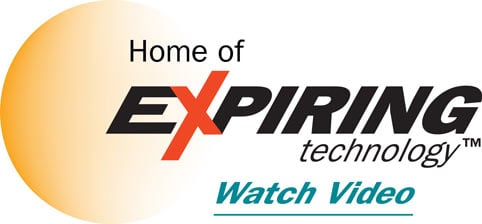Blog
CPTED Office Building Security Checklist
by Paul Kazlauskas

Office building security is serious business. Security Directors need to have their finger on the pulse of many aspects of building security, including its physical security, managing security personnel, maintaining quality access control, and dealing with security equipment.
One popular security concept that Security Directors across the country have implemented is Crime Prevention Through Environmental Design (CPTED). These are a set of building design principals used to discourage crime. The basic concept is buildings should be built and configured to deter crime. There are four main elements to CPTED:
- Natural Surveillance – This means security personnel should, to their best abilities, arrange the inside and outside of their office buildings for maximum visibility.
- Territorial Reinforcement – The goal here is to create an evident and visible distinction between the building’s property and public property. Employees and authorized personnel have a sense of ownership of their space and will notice if someone doesn’t belong there. Conversely, people who are not authorized to be in a facility have a hard time blending in.
- Natural Access Control – This concept centers around the use of the building and landscaping features around the building to help guide people as they enter and exit the facility.
- Maintenance – Having a poorly maintained property demonstrates that its owner is no longer willing or able to control their property. This is an invitation for criminals to start monitoring the facility as a possible target.
Below is an office building security checklist for Security Directors to consider when implementing the principals behind CPTED.
Natural Surveillance Checklist:
- Window signs should cover no more than 10 percent of the window surface.
- Interior furniture and displays should be no higher than five feet to maintain visibility.
- Security lighting should be in accordance with the IESNA Lighting Handbook, published by the Illuminating Engineering Society of North America.
- Lighting surveys should be performed on a regular basis to check illumination levels.
- Exterior parking lots should be well lit so that people can be recognized from 25 feet away.
- Exterior parking lots should be visible from inside the facility.
- Street and or sidewalks should be visible from inside the facility.
- Video surveillance footage should be kept for a minimum of three months.
- Nonworking surveillance cameras should be repaired or removed.
- Some interior lighting should remain on at night.
- Outside shrubbery should be no higher than 36 inches.
- Trees directly next to the building should be no higher than seven feet.
- The building’s address should be clearly seen from the street and not obstructed in any way.
Territorial Reinforcement Checklist:
- Provide perimeter fencing, as feasible, to limit access from other properties.
- Property lines should be well marked by fences, shrubbery, and/or walls.
- Visitor Management Software should be installed to document any and all types of visitors to a facility.
- Require your visitors to wear visitor badges while on the property. Make those visitor badges extra secure by using self-expiring visitor badges that change color overnight to prevent reuse.
- Don’t leave building guests unsupervised.
- Security personnel and employees should be trained and empowered to question visitors who aren’t wearing a visitor badge.
- Instruct employees to keep their computers, desks, and offices locked when unoccupied.
- If within the security budget, implement an interior access control program to designate which areas of a building certain people are permitted in.
Natural Access Control Checklist:
- Walkways, landscaping, and driveways should lead visitors to a single entrance.
- Access to the roof should be restricted to authorized personnel only and the entrance should be locked.
- Exterior door hinges should not be accessible from outside.
- Exterior doors should be locked with deadbolts.
- Deadbolts should have a minimum one-inch throw and the strike plates should be anchored to the door frame.
- If keys used, all keys should be documented and accounted for.
- To maintain the integrity of the key control program, establish policies regarding who has access to rooms, who has authority to grant access to a particular area, and who is responsible for issuing keys. Also, permit only authorized locksmiths to change or repair locks.
- If access control cards are in use, the system must be able to immediately disable any given employees’ card in the event the card has been lost, stolen, or the employee has been terminated.
- Windows should be locked.
Maintenance Checklist:
- Unnecessary debris should be removed from the grounds.
- Weeds should be removed and any trees or shrubbery above their stated heights (in the Natural Surveillance Checklist above) should be trimmed.
- All lighted signs and light fixtures should be in working order.
- Keep the outside walls looking clean. Powerwash and or paint as necessary to keep a professional appearance.
- Check for signs of vagrants living on or around the property or signs of vandalism or graffiti on buildings.
- Dumpsters and trash receptacles should be secured with a proper locking mechanism.
To help with Territorial Reinforcement, using a visitor management system is recommended. eVisitor Software is a stand-along visitor management systems that can affordably increase your facility security and help you always know who is in your building. eVisitor makes it easy for facilities to log, identify, track, and run reports on visitors. Watch this video to learn more, then request a free demo today!
Schedule a demo of eVisitor Software for Visitor Management
Posted on 1/17/2024



 Paul Kazlauskas
Paul Kazlauskas
 Andrew Jones
Andrew Jones